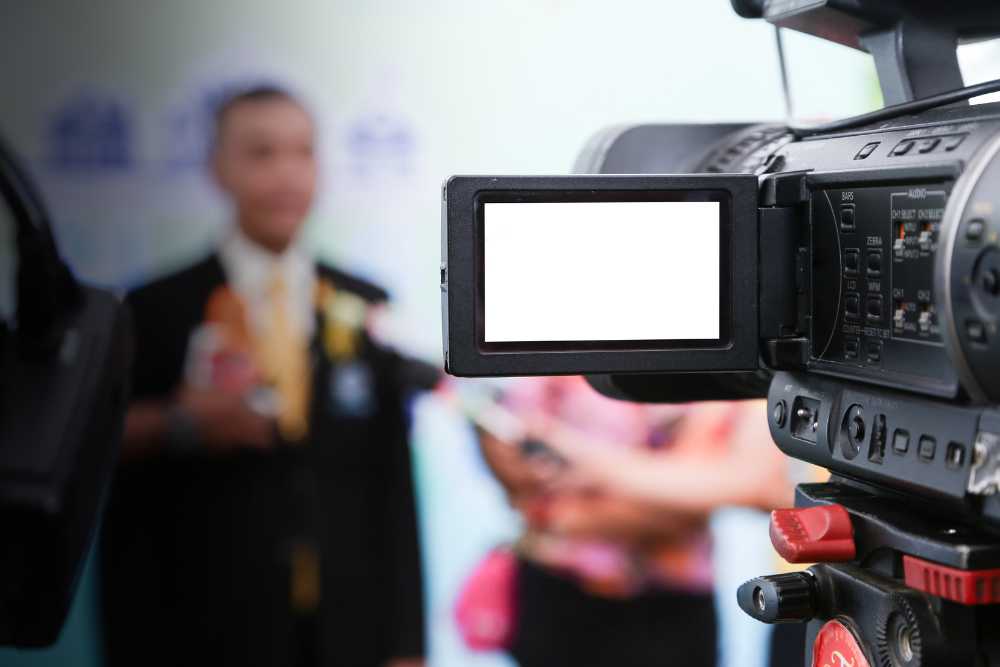No brand or individual is immune to crisis. One unexpected misstep—a product recall, a viral complaint, a public misquote—and suddenly, the spotlight isn’t flattering. It’s harsh, demanding answers, and moving fast. When a PR emergency hits, you don’t rise to the occasion—you fall to the level of your preparation.
That’s where media training becomes essential. Long before the first journalist calls or the social chatter spirals, the work should already be done. Spokespeople should know how to stay composed. Key messages should be sharpened. Protocols should be ready to go.
Media training isn’t just for high-profile interviews—it’s a brand’s first line of defense when reputation is on the line. Let’s break down the techniques that every business should embed now—because during a crisis, clarity, confidence, and control matter most.
Lead with Message Control
In high-stakes moments, your message is your anchor. Without control, communication can quickly unravel, leaving room for speculation, contradiction, or confusion.
Effective media training starts with clarity—understanding what to say, how to say it, and when to stop. Your narrative needs to be focused, factual, and values-driven. Media interviews aren’t conversations. They’re performances. Every word counts.
What works: Use bridging techniques to guide the conversation back to key messages. Phrases like “What’s important to remember is…” or “While that’s one aspect, here’s what we’re focused on…” are simple yet powerful in keeping responses measured and consistent.
The goal? Stay informative without becoming defensive. Direct, not dismissive. Calm, never careless.
Have a Crisis Communication Protocol in Place
Panic has no place in a well-prepared comms team. A structured crisis communication protocol allows you to act swiftly without scrambling.
Before any crisis occurs, define:
- Who leads the response
- Who speaks to media
- What channels are used
- What the internal escalation flow looks like
- How often key updates are delivered
What works: Run scenario planning sessions quarterly. Simulate real-world situations—think cybersecurity threats, public complaints, or operational delays—and test your team’s ability to respond. These drills turn theory into muscle memory.
When a crisis breaks, your team shouldn’t be figuring out what to do. They should be moving through a well-practiced plan, together.
Refine On-Camera Delivery
Body language, tone, and presence often speak louder than the words themselves. In a media environment where press conferences, Zoom interviews, and social video responses are part of the norm, the ability to appear composed on-camera is crucial.
What works: Regularly record mock interviews. Observe posture, eye contact, hand gestures, tone. Are you blinking too often? Speaking too quickly? Avoiding the camera? Media training sessions should help spokespeople develop a calm, open, and grounded presence.
When audiences see a leader who appears in control, it subtly reinforces the message: We’ve got this.
Speak Strategically, Not Reactively
Crisis situations demand careful communication—not over-communication. There’s a fine line between transparency and overexposure. Too little information and the brand appears evasive. Too much, too soon, and you risk locking yourself into statements you’ll need to walk back.
What works: Practice calm, factual placeholder responses when full information isn’t available. Phrases like “We are assessing the situation and will share verified updates as soon as we can” allow time to investigate while signaling accountability.
It’s okay not to have all the answers—what matters is how you communicate the process of getting them.
Also Read – Best Storytelling Strategies Across Social Media Platforms
Make It a Team Sport
A crisis doesn’t stay in the boardroom. It leaks into inboxes, social channels, DMs, call centres, even personal conversations. That’s why media training shouldn’t stop with the leadership team.
Every team member who communicates externally—especially customer support, marketing, and social media—should be across the core messages and tone.
What works: Develop easy-to-access response guides, holding statements, and FAQs tailored to different audience groups. Train front-facing staff on how to manage tough questions, when to escalate, and how to redirect inquiries without sounding scripted or dismissive.
Your brand voice should stay steady across all touchpoints—even in turbulence.
Check Out – Media Training Essentials: Preparing Your Team for Public Relations Success
Prepare for the Tough Questions
Crisis moments come with pointed questions. “Why did this happen?” “Who is responsible?” “Why wasn’t it prevented?”
What works: Practice the three-part response method:
- Acknowledge the issue.
- Outline the action being taken.
- Reaffirm the brand’s values or next steps.
For example:
“We understand the concern. We’ve paused distribution while our team investigates, and our priority is to ensure this never happens again.”
Confidence doesn’t mean having all the answers. It means delivering what you know, without flinching.
Balance Empathy with Leadership
Crisis communication isn’t just about the facts—it’s about the feelings. The public wants to know: Do you care? Are you listening? Are you leading through this, or spinning it?
Tone matters. Empathy isn’t weakness. It’s a strategy.
What works: Humanise your responses. Use language that shows understanding without overpromising.
“We’re sorry this happened.”
“We’re listening.”
“We’re working hard behind the scenes to make this right.”
Avoid jargon. Avoid generic apologies. A sincere, human voice cuts through when tensions are high.
Build Relationships Before You Need Them
A crisis is not the time to be introducing yourself to media contacts. Journalists are more likely to report fairly and engage constructively when there’s mutual trust already in place.
What works: Stay connected to key media even during calm periods. Offer expert commentary. Be responsive. Be reliable. Respect deadlines. When you show up for media when things are going well, they’re more likely to give you the benefit of the doubt when they’re not.
Being on good terms with journalists isn’t about control—it’s about collaboration. In high-pressure moments, that relationship can shape the tone and reach of your story.
Conduct a Post-Crisis Review
Once the storm passes, don’t move on too quickly. Every crisis is an opportunity to refine your process and strengthen your brand’s resilience.
What works: Debrief with your internal team. What worked? What didn’t? Were media trained spokespeople confident and clear? Did your key messages land? How quickly were statements approved? What could be improved next time?
Turn real-time feedback into real-time growth.
Check Out – Measuring the Impact of Media Training: How to Evaluate Performance and Keep Improving
Calm is a Competitive Advantage
Brands that handle crises well aren’t necessarily the ones with the biggest budgets or the glossiest image. They’re the ones that prepare. They invest in media training. They align their teams. They know their voice, their message, and their audience. And when the unexpected arrives, they meet it with calm clarity.
In today’s digital age, a crisis can go global in minutes. But so can your response. What matters is how you show up—clear-eyed, confident, and ready.
So don’t wait for the alarm bell. Train now. Refine now. Strengthen your communication toolkit now. Because when the pressure’s on, your preparation shows.









